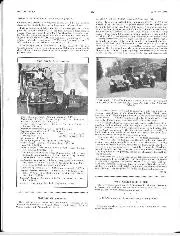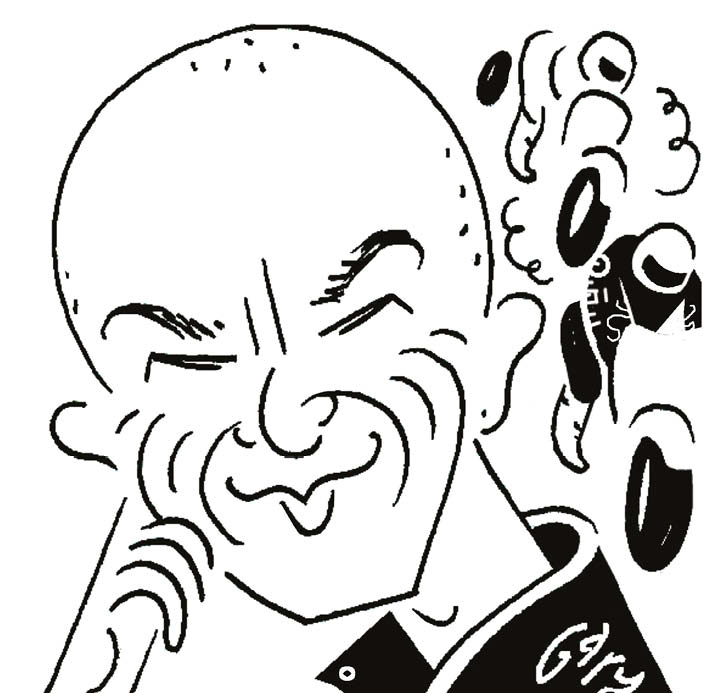
More Silverstone Shorts
The Silverstone crowd saw G. A. Vandervell's Thinwall Ferrari in its latest guise, with new nose-cowl and air-intake, stub-exhausts, and fairings over the rear suspension radius arms. The B.R.M.s push-started…

September 1 2019 marks the centenary of the birth of Walter Kaaden, the German engineer who transformed motorcycle grand prix racing by creating the modern two-stroke engine. Between 1958 and 2011 (after which MotoGP went fully four-stroke), two-stroke bikes won more than 2000 grands prix, all directly or indirectly attributable to the great man.
Kaaden, a former weapons engineer who worked on the Henschel Hs-293 Gleitbombe (guided missile) and ME 262 jet-powered fighter plane, ended the war on the east side of the Iron Curtain, where he set about building the world’s most powerful race bikes. His state-owned employer MZ had scant resources, but it didn’t matter, because Kaaden was a genius who noticed two-stroke possibilities where others saw none.
“The most promising possibility to gain performance lies with the exhaust, basically a downstream supercharger,” he once wrote.
Kaaden’s 1961 125cc MZ was the first normally aspirated engine to produce 200bhp per litre. The bike should have won that year’s world championship, but instead MZ’s star rider Ernst Degner defected during the Swedish GP and sold Kaaden’s secrets to Suzuki. The very next year Suzuki won its first world championship, as later did Yamaha, Kawasaki and others, all using Kaaden’s two-stroke tricks.
Following Degner’s defection the GDR authorities mostly forbade Kaaden and his mechanics from travelling to The West. Thus MZ’s racing exploits were much curtailed. But where there’s a will there’s a way…
“Kaaden watched the Japanese factories take his ideas”
At the end of 1960 Kaaden hired British rider Alan Shepherd, who enjoyed success on 125, 250 and 350cc MZs. After 1961 Kaaden accompanied Shepherd to races when he was allowed, but other arrangements had to be made when he wasn’t.
In 1963 Shepherd had an entry for the Italian GP at Monza, but Kaaden wasn’t given clearance to attend, so both parties drove to the Brenner Pass on the Italian/Austrian border, where the bikes were switched from the MZ truck to Shepherd’s Austin van.
Setting up a two-stroke GP bike was never easy. The engines were fickle, affected by the slightest change in ambient pressure and temperature. And also by engine wear.
“If the cylinder wears, the port profiles change, and so does engine behaviour,” wrote Kaaden. “So you may tune an exhaust to suit a certain engine, then after the race you change the piston and the engine doesn’t have the same power as before. So you can’t tune the engine to the smallest detail, because in the meantime other components can wear so much that they require changing, and it all starts over again.”
Despite such constraints, Shepherd went well at Monza, telephoning Kaaden whenever he needed advice. The pair had agreed that if the engines required more serious attention, the work would have to be done by Kaaden on the Austrian side of the Brenner pass, a 450-mile round trip from Monza. Luckily that wasn’t required, and Shepherd finished second in the 350cc Italian GP and fourth in the 250.
The 1964 championship began at Daytona, USA. Obviously there was no way the GDR would allow Kaaden and his crew to travel to the heart of western decadence, nor would the Americans allow a bunch of Commie bike nuts into their country, so Shepherd went alone.
But first he had to get the bike. Shepherd climbed into his Austin once again and set off for the Berlin corridor, the 120-mile strip of neutral asphalt that linked West Berlin to West Germany. The bike swap was made at Helmstedt, ironically the same East/West border crossing used by Degner’s family when they had escaped in the boot of a car.
The MZ-RE250 was air-freighted from London to Florida, after Shepherd had abandoned the Austin, which broke a conrod near Cologne. Things went almost as badly at Daytona – Shepherd was so far adrift that on the eve of final practice he called Kaaden in Zschopau.
This wasn’t an easy or cheap procedure. At first the American telephone company refused to connect a call to the GDR. Finally, under pressure from Daytona, it relented. Shepherd made the call, but at £30 a minute in today’s money, it had to be quick.
He recited his problems to Kaaden, who quickly decided the cause was low-grade fuel. “Don’t interrupt me now,” he told Shepherd. “Here is what you must do… Do all that and I think you will win! Goodbye.”
And Shepherd did win, after hurriedly making some adjustments to compression, ignition and carburation. That year the 28-year-old scored two more podium results – at the Isle of Man TT and Spa-Francorchamps – to end the campaign third overall, behind the mighty Yamaha and Honda factories.
MZ continued to make occasional forays into grand prix competition over the next decade, taking its final victories in 1971. Kaaden passed away in 1996, having watched the Japanese factories take his ideas and, with it, control of motorcycle racing. “Every time you build something good, someone steals it,” he said shortly before his death. “I have to accept it. I cannot change it.”
Mat Oxley has covered motorcycle racing for many years – and also has the distinction of being an Isle of Man TT winner
Follow Mat on Twitter @matoxley